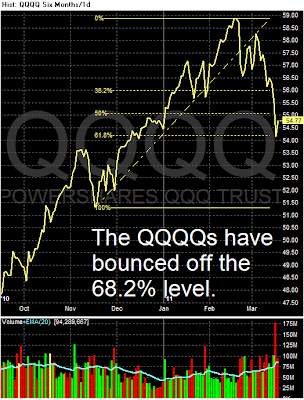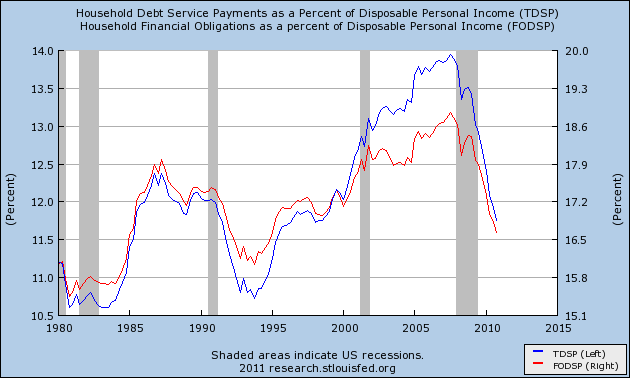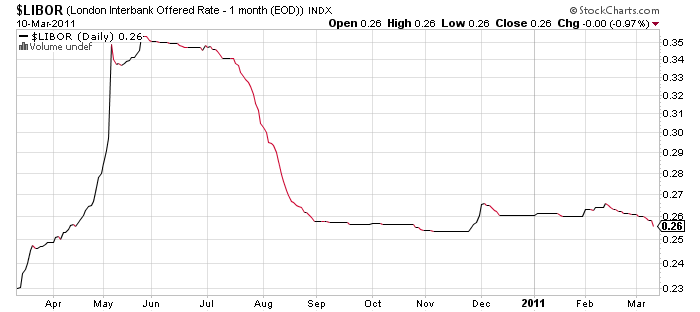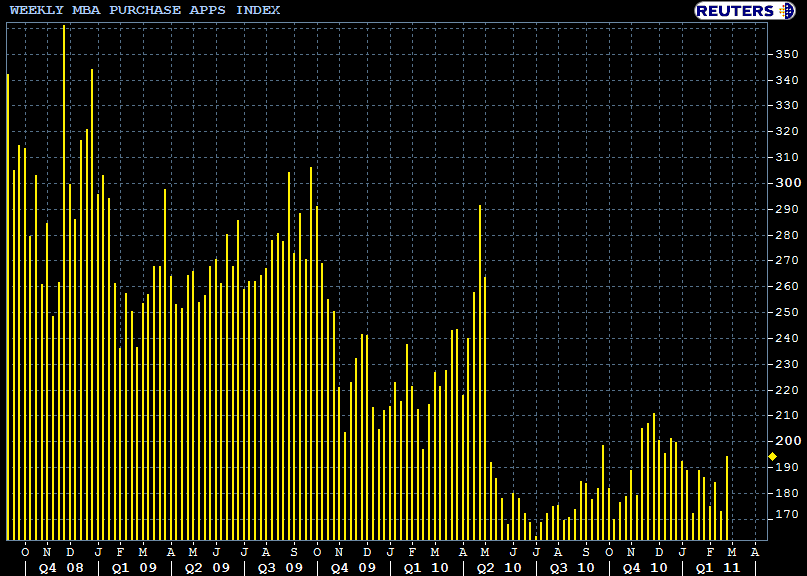Paul Krugman put it perfectly this morning:
we’re well on the way to creating a permanent underclass of the joblessThat is the most bothersome feature of this recovery: Yes, the economy is getting better and has been for some time. It now looks like the recovery is trying its d@#$edest to be self-sustaining. We're even adding 150,000 jobs or more a month on average now. But there remain about 8 million long-term unemployed and another 8 million long-term underemployed as a result of the Panic of 2008.
To re-employ them, we need a New Deal-style Recovery: with GDP growing 5% or more, and unemployment falling 3% or more, a year - or at very least about 300,000 new jobs a month. And yet, with the stimulus wound down, we are attempting this with George W. Bush-style fiscal and tax policies. Worse, Austerian nonsense is everywhere (within the Beltway) triumphant. Well, we already know what kind of an expansion Bush-style tax and fiscal policies lead to: weak, with the most anemic job creation since World War 2.
So, while there is no doubt whatsoever that this is a recovery, it is a recovery that is leaving behind exactly what Krugman says: a permanent underclass of the jobless. The United States thus is taking one big step closer to becoming the superpower Banana Republic.
The monthly data out this week included Leading Economic Indicators, up +0.8. The Conference Board interpreted this to mean that growth will continue at least into the summer. On the other hand, industrial production contracted in February (although January was revised higher). This important coincident indicator has weakened substantially in the last three months. Housing Permits and Starts also fell off a cliff, but I suspect that was simply the mirror image of the rush for permits in December. Taken together, the last 3 months of housing permits and starts are still higher than the 3 months previous. If the cliff-diving continues next month, then we actually have a story. Food and especially energy costs caused Producer Prices to soar 1.6%, the highest since the days of $150 Oil,, and Consumer Prices also rose +0.5%. YOY consumer prices are up +2.2%, and so have now increased significantly more than wages. Expect a slowdown, although the LEI still say no double dip (as does ECRI, by the way).
Turning now to the high-frequency weekly indicators:
The BLS reported that Initial jobless claims last week were 385,000. The 4 week average is 386,000. This is the fourth week in a row that this number has been reported below 400,000 (although last week was revised up 4000 to 401,000). As this is the four week period that will be included in the BLS's next payrolls report, this bodes well for that number.
Oil was trading at about $103.00 a barrel Friday morning, the second full week it has been above $100. It remains at a level above 4% of GDP. There WILL be a significant economic damage but the extent is unknown. Gas at the pump rose $0.06 more last week to $3.58 a gallon. This is an increase of almost $.50 in less than 2 months! Gasoline usage was slightly lower than last year. I expect this comparison to deteriorate so long as the oil price spike continues.
Railfax was up 3.5% YoY. Baseline and cyclical traffic remain barely ahead of last year's level. Shipments of motor vehicles, however, continued to improve YoY.
The Mortgage Bankers' Association reported a decrease of 4.0% in seasonally adjusted mortgage applications last week. This series has meandered generally in a flat range since last June. On the plus side, this is the longest time since 2006 that this series has gone without a major decline. Refinancing increased another 0.9%, but despite that remains near its lows since last July. combined with pitiful housing starts and permits, this is not an auspicious start to Spring selling season.
The American Staffing Association Index finally increased after 5 weeks, one point, to 91. This series has nevertheless stalled in terms of relative YoY gains, and also relative to its pre-recession peak.
The ICSC reported that same store sales for the week of March 12 rose 3.1% YoY, and also increased 0.1% week over week. This series' YoY comparisons had been trending lower since the first of the year, but for the last three weeks there have been good YoY comparisons. Shoppertrak did not issue a new report this week.
Weekly BAA commercial bond rates rose +.03% to 6.08%. This compares with a +0.01% deline in the yields of 10 year treasuries to 3.46%. Both series are down from recent highs. This was the first week in which there was any relative weakness in corporate bonds.
M1 was up 1.6% w/w, unchanged M/M, but up a strong 10.3% YoY, so Real M1 is up 8.1%. M2 was up 0.1% w/w, up 0.5% M/M and up 4.1% YoY, so Real M2 is up 1.9%. M2 is back into the "yellow zone" below 2.5%, but M1 is still strongly in the "green zone" as it has been for several years.
For some reason, the Daily Treasury Statement website does not work. I will update by early next week if this changes. Very odd.
The LEI, a component of which is initial jobless claims, tell us that no double-dip is on the immediate horizon. Nevertheless, Oil remains a choke collar around the economy, and it is retracing its 2008 inflationary path of destruction. That and Austerian stupidity remain the biggest obstacles to re-employing the army of the jobless.
In the meantime, enjoy your weekend and welcome back Spring on Sunday!











































